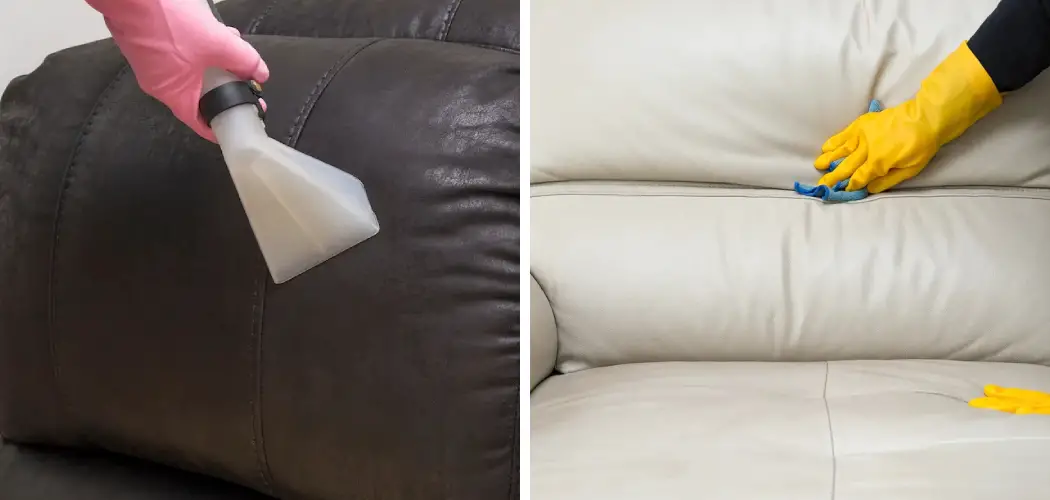The luxurious allure of a leather chair often comes with the responsibility of proper maintenance, especially when it comes to the often-neglected yet essential component – the headrest. Over time, leather chairs can accumulate dirt, oils, and body residues, diminishing their pristine appearance and comfort. Cleaning a leather chair headrest requires a delicate touch and the right techniques to preserve the material’s integrity while rejuvenating its aesthetic appeal.
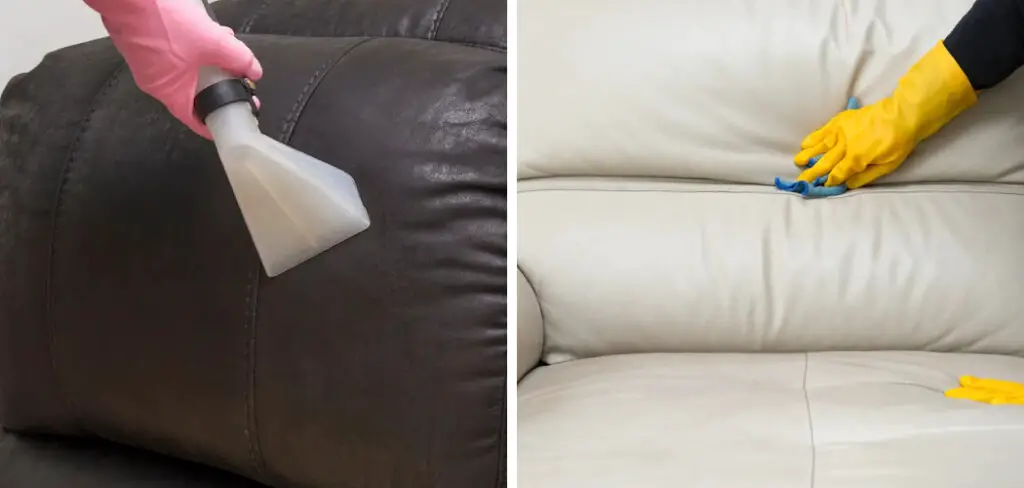
In this comprehensive guide, we delve into how to clean a leather chair headrest, exploring step-by-step methods and sharing valuable tips to ensure that your cherished piece of furniture remains both visually stunning and invitingly comfortable. Whether your leather chair resides in a home office or a cozy reading nook, mastering the art of headrest maintenance will undoubtedly contribute to the longevity and elegance of this classic seating accessory.
Importance of Cleaning Leather Chair Headrests
Regular cleaning of leather chair headrests is not merely about aesthetic upkeep; it’s crucial for hygienic reasons as well. The headrest often comes into contact with hair and skin, absorbing natural oils and sweat which can break down the leather over time. If neglected, this buildup can lead to discoloration, unpleasant odors, and a decrease in the leather’s durability.
Moreover, routine maintenance of the headrest ensures that it remains a hygienic point of contact, which is particularly important in shared spaces. By dedicating attention to the headrest, you are not only preserving the material but also ensuring that the chair remains a healthy and clean part of your environment.
Benefits of Regular Maintenance
The benefits of regular maintenance of leather chair headrests extend far beyond cleanliness and aesthetics. Keeping a consistent cleaning schedule helps to prevent premature wear and tear, ensuring that the headrest supports and comforts you for years to come. By caring for the leather properly, you are also protecting your investment, as fine leather furniture can be quite costly.
Maintaining the headrest’s surface also makes for a more inviting and professional appearance, which is especially important in office or formal settings. Furthermore, the preservative effect of regular cleaning can improve the resale value of the chair should you decide to upgrade or redesign your space. In short, routine upkeep of your leather headrest is an essential aspect of preserving both its functional and economic value.

Understanding Leather Chair Headrests
Before embarking on the cleaning process, it’s essential to understand the material you’re dealing with. Leather is a natural, porous material that can vary greatly in quality and type. There are predominantly two types of leather used in furniture like chair headrests: protected (also known as finished) leather, characterized by its durability and resistance to stains, and aniline (or unfinished) leather, which is more natural-looking but also more susceptible to damage.
Knowing the difference is crucial, as the cleaning methods and products used can differ significantly. Additionally, it’s important to recognize the signs of wear and identify any existing damage before cleaning. This understanding will help inform your approach to maintenance, allowing for tailored care that respects the leather’s unique properties and needs. Regular inspection and prompt attention to any issues can keep a leather chair headrest in top condition, enhancing comfort and longevity.
Types of Leather Used in Chairs
Leather chairs are commonly upholstered with one of several types of leather, each with unique characteristics and care requirements.
Full-grain leather is the highest quality, known for its strength and durability. It preserves the hide’s natural surface, including any marks or imperfections, which many consider adding character to the furniture.
Top-grain leather is similar to full-grain but has been sanded to remove imperfections, creating a more uniform appearance. It is still durable but more pliable than full-grain leather.
Bonded leather is made from leftover hide bits and pieces bonded together with adhesive and is less durable but more cost-effective.
Finally, faux leather or leatherette is a synthetic alternative that mimics the look of real leather at a fraction of the cost, but it doesn’t offer the same feel or aging qualities as genuine leather. When cleaning a leather chair headrest, identifying the type of leather used is a critical first step to ensure proper care and to avoid damaging the material.
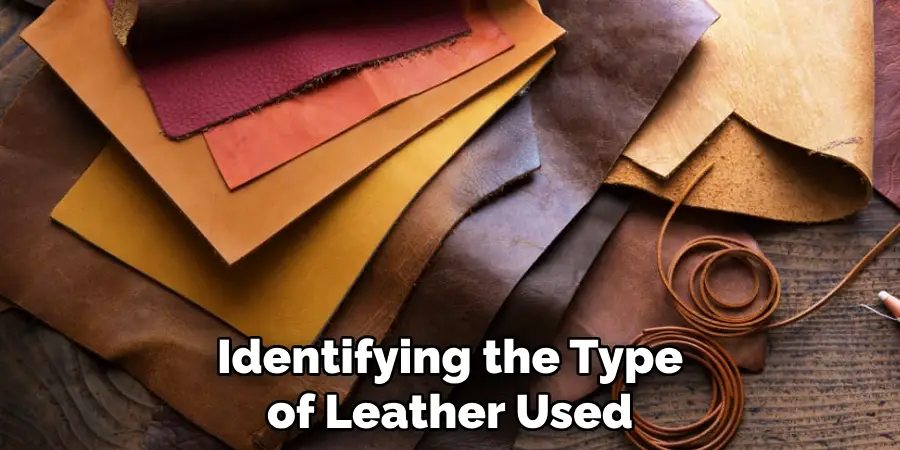
Characteristics of Leather Headrests
Leather headrests are distinguished by their rich texture, signature scent, and a patina that develops over time, telling the story of its use and care. These characteristics contribute to the appeal and luxe presentation of leather chairs. The headrest, in particular, confronts unique stressors, such as the hair and skin oils from constant contact. This exposure to elements can result in a glossier patina in certain spots, while other areas may show signs of drying or fading.
Moreover, the leather’s color may evolve, influenced by light exposure and cleaning products used. Such nuances underscore the importance of understanding the particularities of the leather, as each type reacts differently to usage and care efforts. This knowledge is pivotal when selecting cleaning agents and techniques to ensure they align with the specific needs of the leather, preserving its integrity and charm.
Factors Affecting Cleaning Methods
When selecting the appropriate cleaning methods for leather chair headrests, various factors must be taken into consideration. The type of leather is paramount, as finished and unfinished leathers require different care products. The age of the leather also has an impact, with older leather typically being more delicate and prone to damage. Environmental factors, such as exposure to sunlight or humidity, can affect the leather’s condition and, consequently, its cleaning needs. Frequency of use plays a role as well; chairs that are used more often accumulate oils and dirt quicker, possibly requiring more frequent cleaning.
The presence of existing damage, such as cracks or stains, will also dictate a gentler approach to prevent further harm. Lastly, the manufacturer’s care instructions should always be adhered to, as they are tailored to the type of leather and the finishes used in the making of the headrest. Understanding these factors is essential in choosing the correct cleaning agents and techniques to maintain the headrest’s aesthetics and longevity without causing inadvertent damage.

10 Methods How to Clean a Leather Chair Headrest
1. Regular Dusting and Vacuuming:
Start by dusting the leather chair headrest regularly with a soft, dry cloth or a brush attachment on a vacuum cleaner. This helps remove surface dust and prevents it from settling into the pores of the leather. Vacuuming is particularly effective for getting into creases and seams. Remember to also vacuum the cushions and armrests.
For deeper cleaning, use a leather cleaner that is specifically designed for this material. Avoid harsh chemicals or abrasive cleaners as they can damage the leather fibers and cause discoloration. Follow the instructions on the product carefully, and always test it on a small, inconspicuous area first.
To remove stains, start by blotting the affected area with a clean, damp cloth. Avoid rubbing as this can spread the stain and damage the leather. If the stain persists, use a mild soap solution and gently clean the area with a soft cloth. Once cleaned, wipe away any excess soap with a damp cloth and dry with a clean towel.
2. Gentle Soap and Water:
For light soiling, create a solution of mild soap and warm water. Dampen a soft cloth with the solution and gently wipe the leather headrest. Be cautious not to oversaturate the leather, and always follow up with a dry cloth to prevent water damage. This method is suitable for general cleaning and maintaining the leather’s natural oils.
If necessary, use a soft-bristled brush to gently scrub any stubborn stains. Be sure to test the soap solution on a small, inconspicuous area first before applying it to the entire headrest.
To keep your leather looking its best, it is recommended to clean and condition it at least once every three months. This will help prevent drying and cracking of the leather, and also maintain its softness and shine. Simply follow the steps above for gentle soap and water cleaning, then finish off with a leather conditioner.

3. Commercial Leather Cleaner:
Invest in a high-quality commercial leather cleaner specifically designed for cleaning and conditioning leather. Follow the manufacturer’s instructions for application, typically involving applying the cleaner with a soft cloth and wiping away any excess. These cleaners often help to nourish the leather while removing dirt and stains. It is important to choose a cleaner that is compatible with the type of leather you are treating, as certain cleaners may damage or discolor certain types of leather.
Some commercial leather cleaners also come in spray form, which can be convenient for spot cleaning or treating smaller areas. These sprays should be applied from a distance and then wiped away gently with a soft cloth. However, be careful not to oversaturate the leather with the spray, as this can cause damage.
4. DIY Vinegar and Olive Oil Solution:
Create a DIY cleaning solution by mixing equal parts white vinegar and water. Dampen a soft cloth with this solution and gently clean the leather. Follow up with a mixture of olive oil and vinegar (one part oil to two parts vinegar) to condition the leather, restoring its natural luster. This solution is great for removing stains and dirt from leather surfaces, while also nourishing the material.
To use this solution, simply mix equal parts white vinegar and water in a spray bottle. Shake well before each use. Spray the solution onto a soft cloth and gently rub it onto the leather surface, being careful not to saturate the material. Use a dry cloth to wipe away any excess solution and buff the leather to a shine.
5. Baking Soda for Stains:
Stubborn stains on a leather chair headrest can be tackled with a paste made from baking soda and water. Apply the paste to the stained area, let it sit for a few hours, and then gently wipe it away. This method is effective for absorbing and lifting stains without causing damage to the leather.
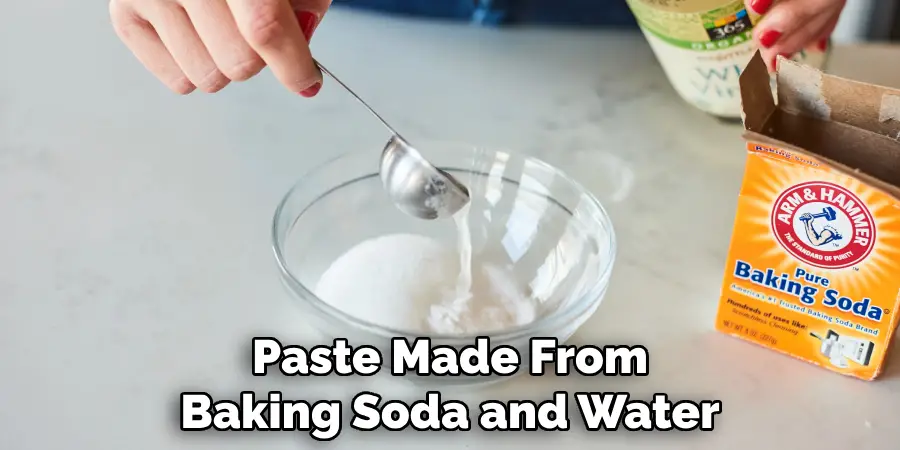
Baking soda is not only useful for removing stains on leather chairs, but it can also be a great tool for tackling stains on other surfaces. For example, mixing baking soda with water to create a paste can be used as a natural and gentle way to remove stubborn stains from clothing and carpets.
In addition, baking soda can help eliminate odors caused by spills and stains. Sprinkling baking soda on a stained area, letting it sit for some time, and then vacuuming it up can help absorb any lingering smells.
6. Eraser for Scuffs and Marks:
Light scuffs and marks can often be removed using a white eraser. Gently rub the eraser over the affected area, and the friction should lift the scuff without damaging the leather. Follow up with a clean, damp cloth to remove any residue. For tougher marks, use a specialized leather cleaner and follow the instructions carefully. Additionally, you can prevent scuffs and marks by regularly applying a leather protector or conditioner.
Another option for removing scuffs and marks is to use rubbing alcohol. Apply a small amount of rubbing alcohol onto a cotton ball or cloth and gently rub it over the affected area. Be sure to test this method on a small, inconspicuous area first to ensure it does not damage the leather.
7. Leather Conditioner Application:
After cleaning, it’s crucial to apply a suitable leather conditioner to replenish the natural oils that may have been removed during the cleaning process. Choose a conditioner that matches your leather type, whether it’s aniline, semi-aniline, or pigmented leather, and follow the product instructions.
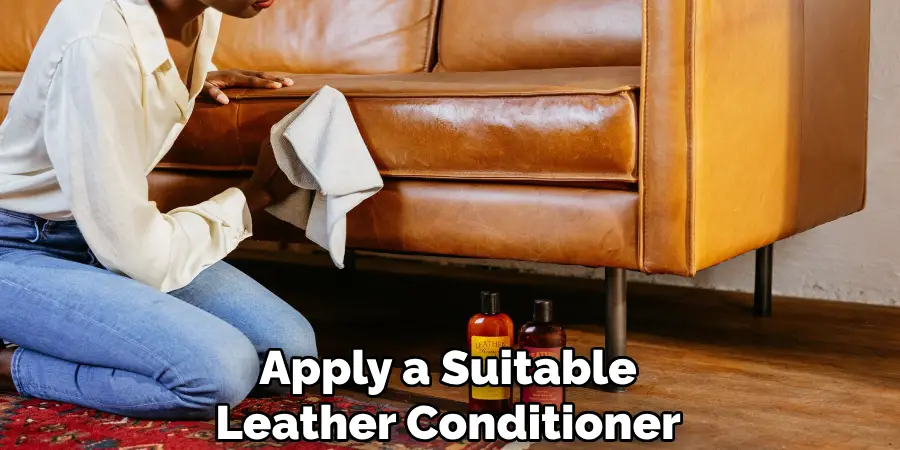
In this section, we will discuss the importance of leather conditioner and how to properly apply it. Leather is a natural material that needs proper care and maintenance to maintain its beauty and durability. Over time, leather can dry out, crack, or become stiff due to exposure to sunlight, heat, dirt, grime, and other environmental factors. This is where a good quality leather conditioner comes in.
8. Steam Cleaning:
For a deeper clean, consider using a handheld steam cleaner with a leather attachment. The steam helps to lift dirt and grime from the leather surface. Ensure that the steam cleaner is used at a safe distance to prevent excessive heat or moisture from damaging the leather. Follow the manufacturer’s instructions for best results.
Steam cleaning is not only effective for leather, but it can also be used on other surfaces such as carpets and upholstery. This versatile tool uses high temperatures to disinfect and sanitize without the use of harsh chemicals. It is a great alternative for those who are sensitive to traditional cleaning products or have allergies.
9. Cornstarch for Grease Stains:
Grease stains on a leather chair headrest can be addressed with cornstarch. Sprinkle cornstarch over the stain, gently rub it in, and let it sit for a few hours or overnight. The cornstarch will absorb the grease, and you can then brush it away with a soft cloth.
It is also important to remember not to use water on grease stains as it can spread the stain and make it harder to remove. Cornstarch is a natural, non-toxic option for tackling tough grease stains without causing any damage to your leather furniture.
Additionally, cornstarch can also be used for other types of stains such as oil or mud. Simply sprinkle some cornstarch over the affected area, let it sit for a few minutes, and then brush away. Cornstarch works by absorbing the stain without leaving any residue or discoloration on your furniture.
10. Professional Cleaning Services:
If your leather chair headrest requires extensive cleaning or has persistent stains, consider seeking the expertise of professional leather cleaning services. Professional cleaners have the knowledge and tools to deep clean and restore leather furniture without causing harm to the material. They can also provide specialized treatments such as conditioning, color restoration, and protective coatings to keep your leather chair looking its best.
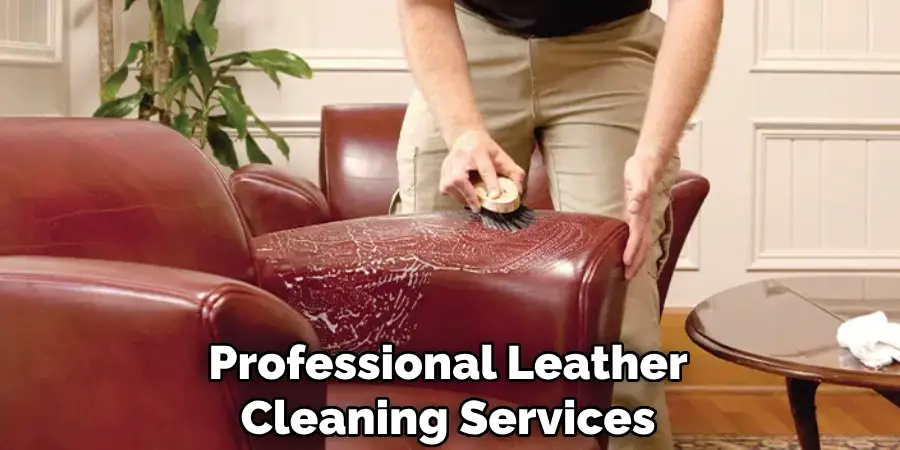
Additionally, professional cleaners have access to commercial-grade cleaning products that are specifically designed for leather furniture. These products are often more effective in removing tough stains and dirt buildup without damaging the leather. Using these products can also help extend the lifespan of your leather chair, saving you money in the long run.
Conclusion
In conclusion, maintaining a clean leather chair headrest not only preserves its aesthetic appeal but also extends its lifespan and durability. By following the outlined cleaning techniques and best practices, individuals can effectively remove dirt, oils, and stains from leather surfaces while protecting its natural texture and finish. Proper preparation, including assessing the condition of the headrest and selecting appropriate cleaning supplies, sets the stage for successful cleaning outcomes.
Whether employing dry cleaning methods with soft brushes or utilizing moist cleaning solutions, it’s essential to approach the process with care and attention to detail. Additionally, post-cleaning care such as conditioning and protection helps maintain the leather’s suppleness and resilience against future wear and tear. Hopefully, this article gave you some helpful tips about how to clean a leather chair headrest successfully, so now that you have the proper knowledge on how to get the job done, why not give it a try today?

